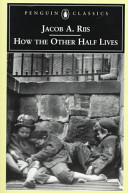Published in 1890, Jacob Riis's remarkable study of the horrendous living conditions of the poor in New York City had an immediate and extraordinary impact on society, inspiring reforms that affected the lives of millions of people. In spare but unsparing prose, Riis takes readers on a tour of New York's slums, into the teeming streets and filthy tenements. He brings to life the various ethnic groups -- the Italians, Jews, Bohemians (Czechs and Slovaks), Blacks, and Chinese -- in vivid descriptions of their habits and traditions, and explores the effects of poverty, alcohol, and lack of education and opportunity on adults and children alike. A stunning indictment of middle-and upper-class indifference to the poor, How the Other Half Lives was directly responsible for concrete and measurable changes in society: new housing and child-labor laws were passed, parks created, public baths built, and schools opened.Riis's reliance on specific, hard facts as the tools and weapons of social criticism pioneered the style of crusading journalism that continues today. His use of photographs (his own and those of colleagues) to flesh out his stories was a landmark in photojournalism, its legacy visible in contemporary documentary films and photo-essays. But, as Luc Sante writes in the Introduction, "There is another reason How the Other Half Lives remains compelling so long after its first publication...The book haunts us because so much of it remains true".
| LoC Classification |
HV4046.N6 .R55 1997 |
| Dewey |
305.569097471 |
| Cover Price |
€ 14.00 |
| No. of Pages |
228 |
| Height x Width |
190
x
130
mm |
| Original Publisher |
Charles Scribner Sons |
| Original Publication Year |
1890 |
|
|
